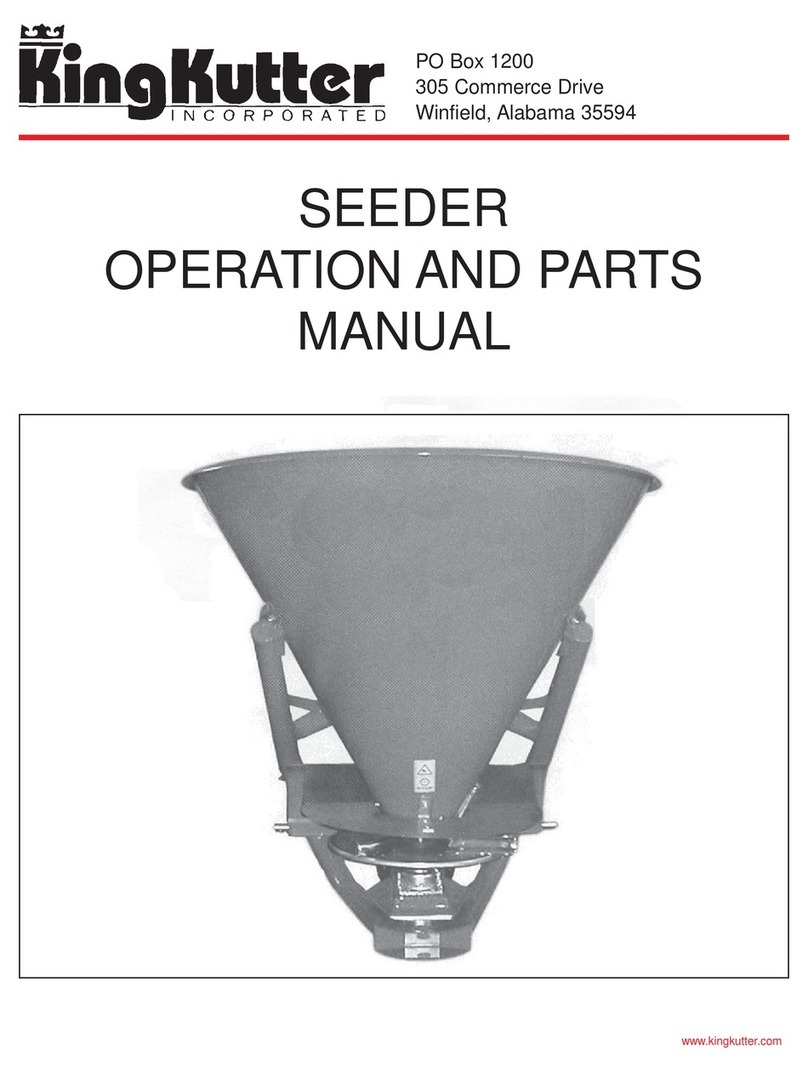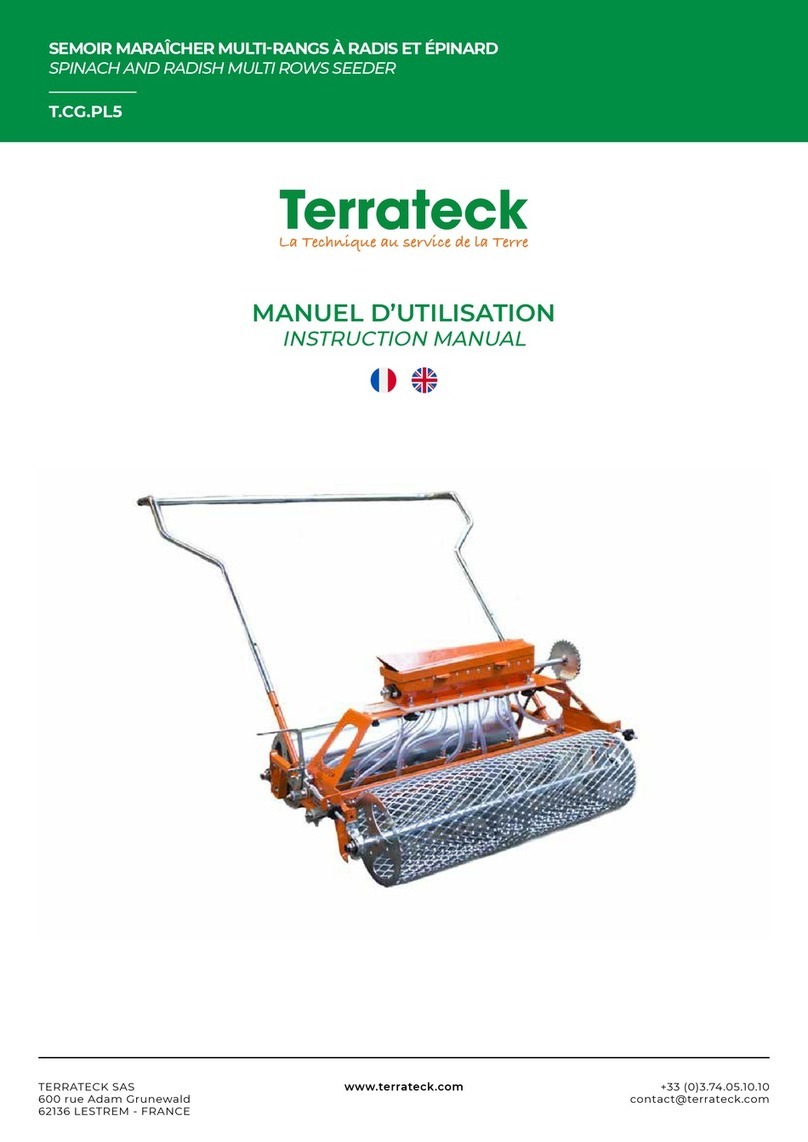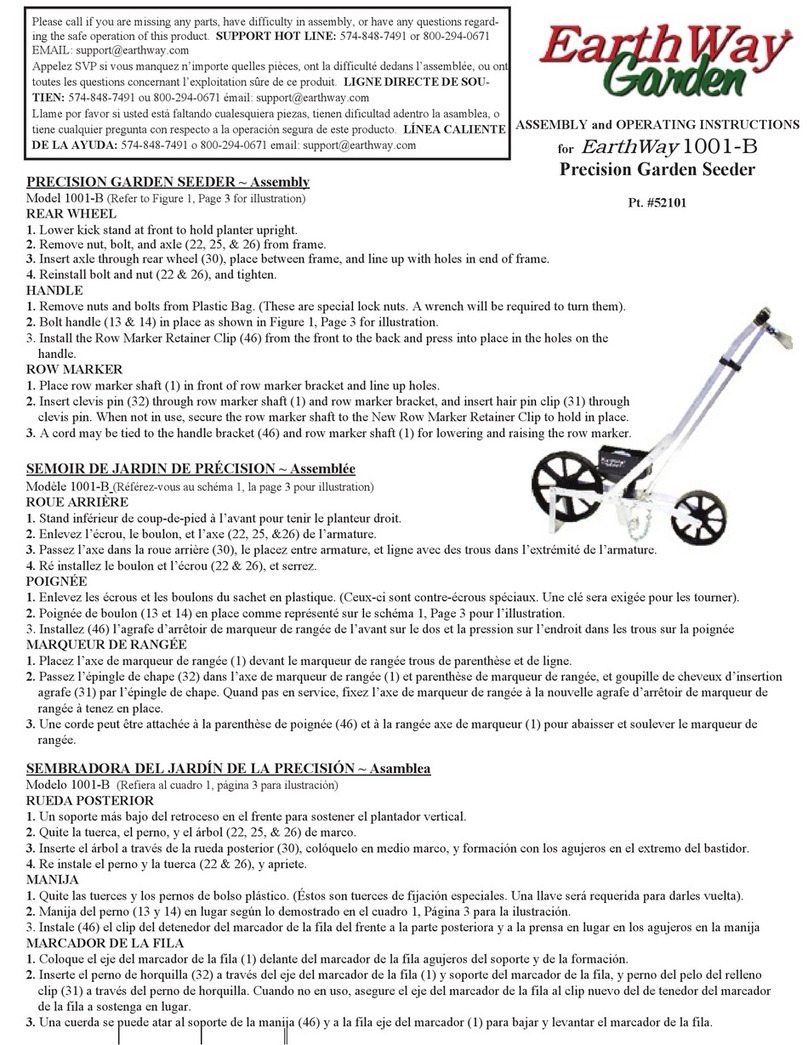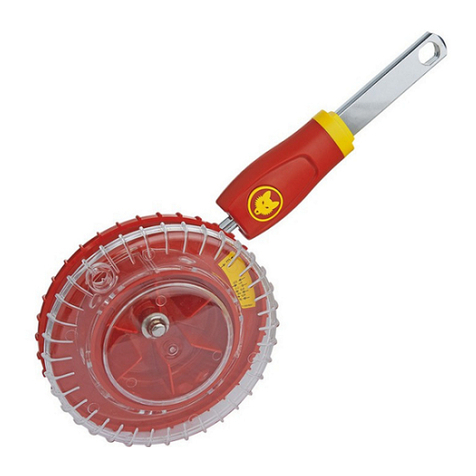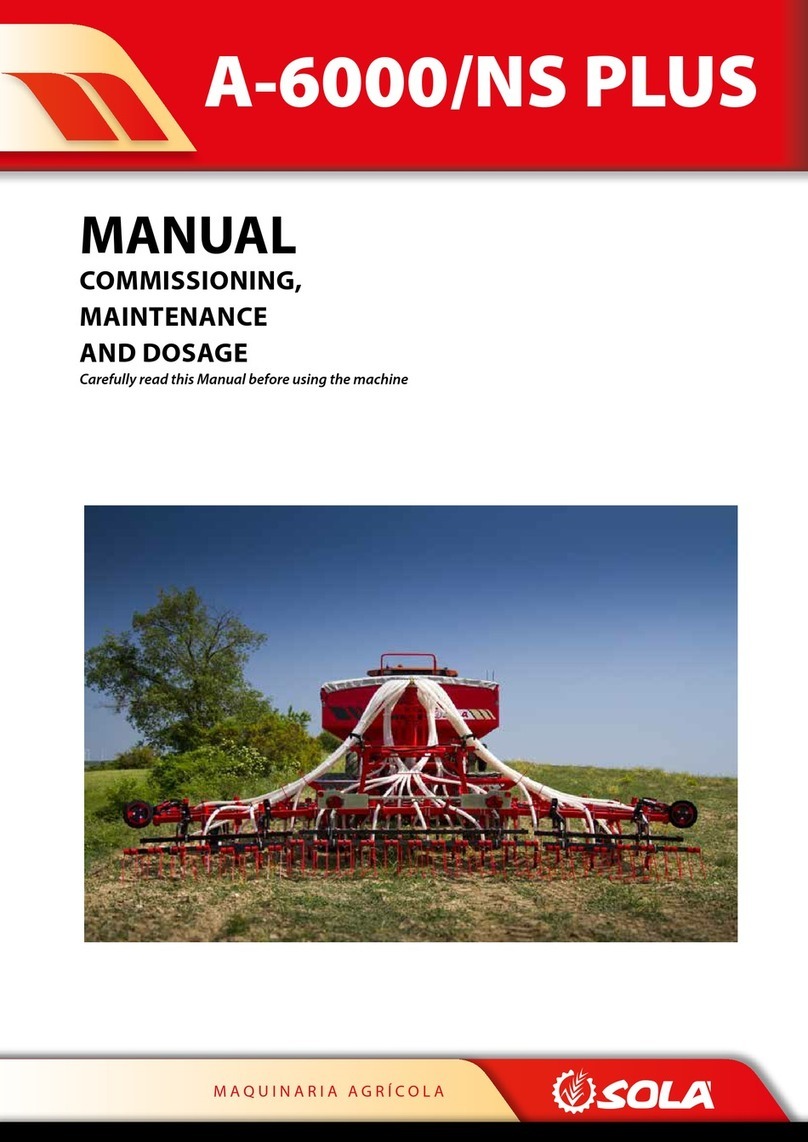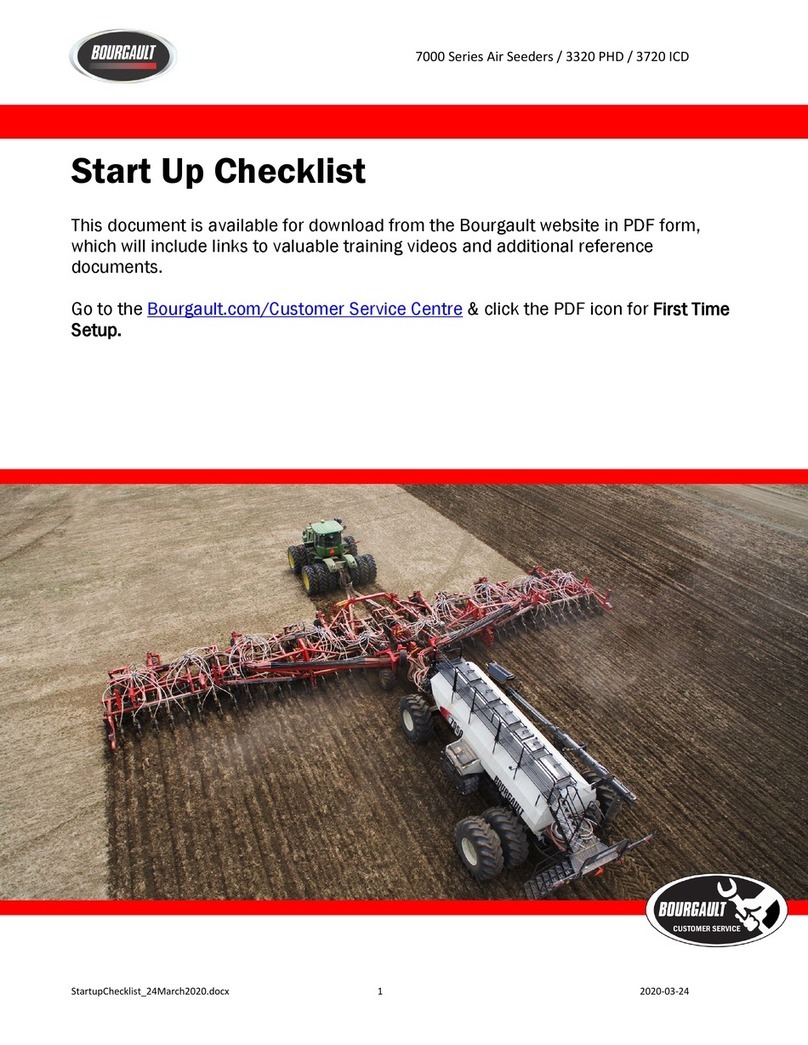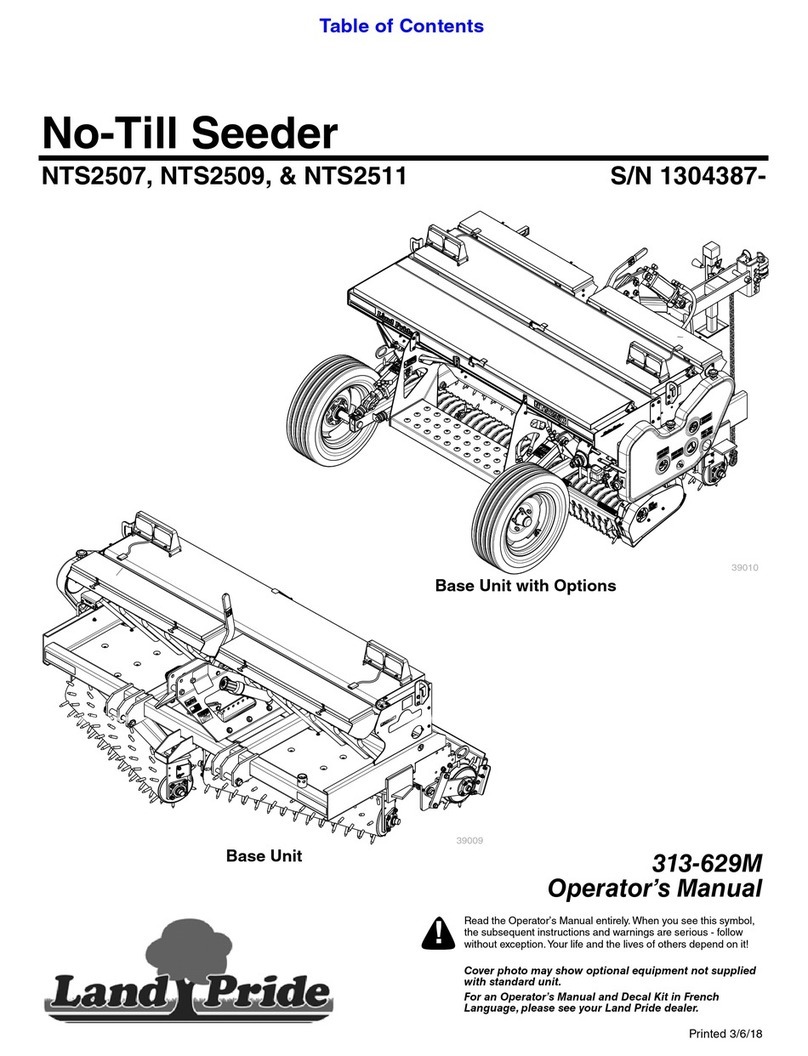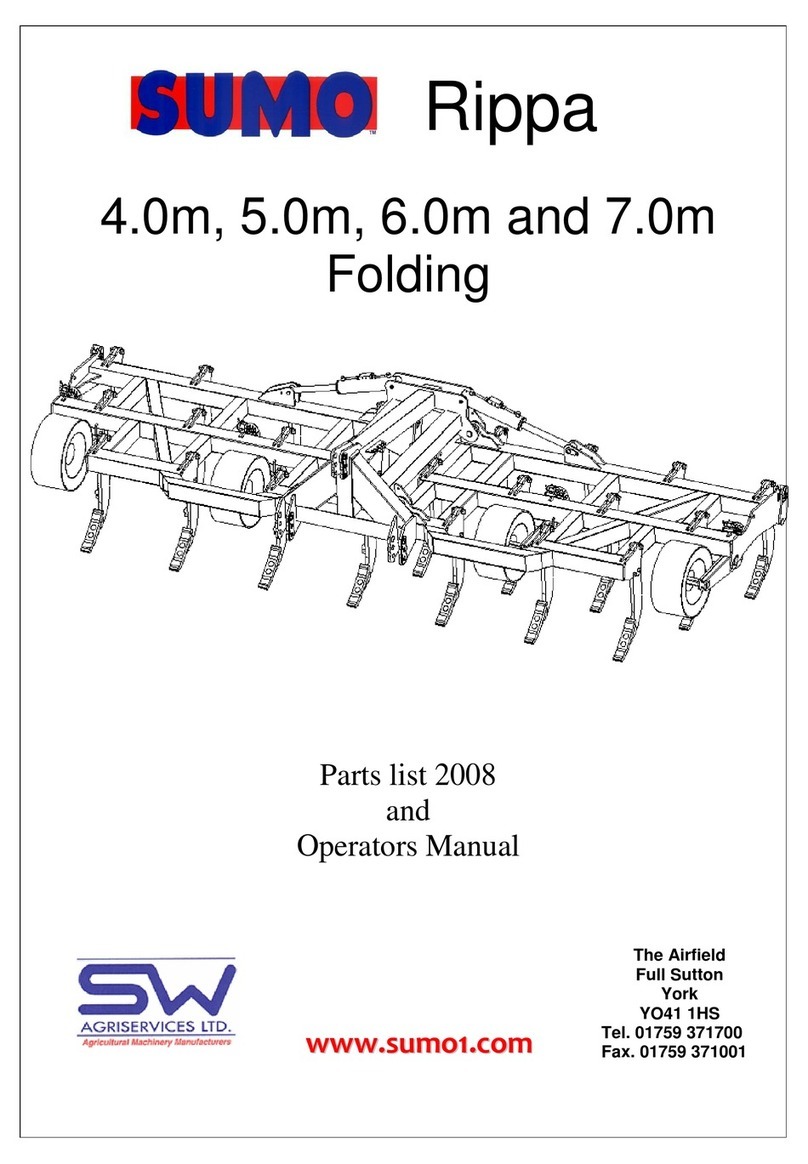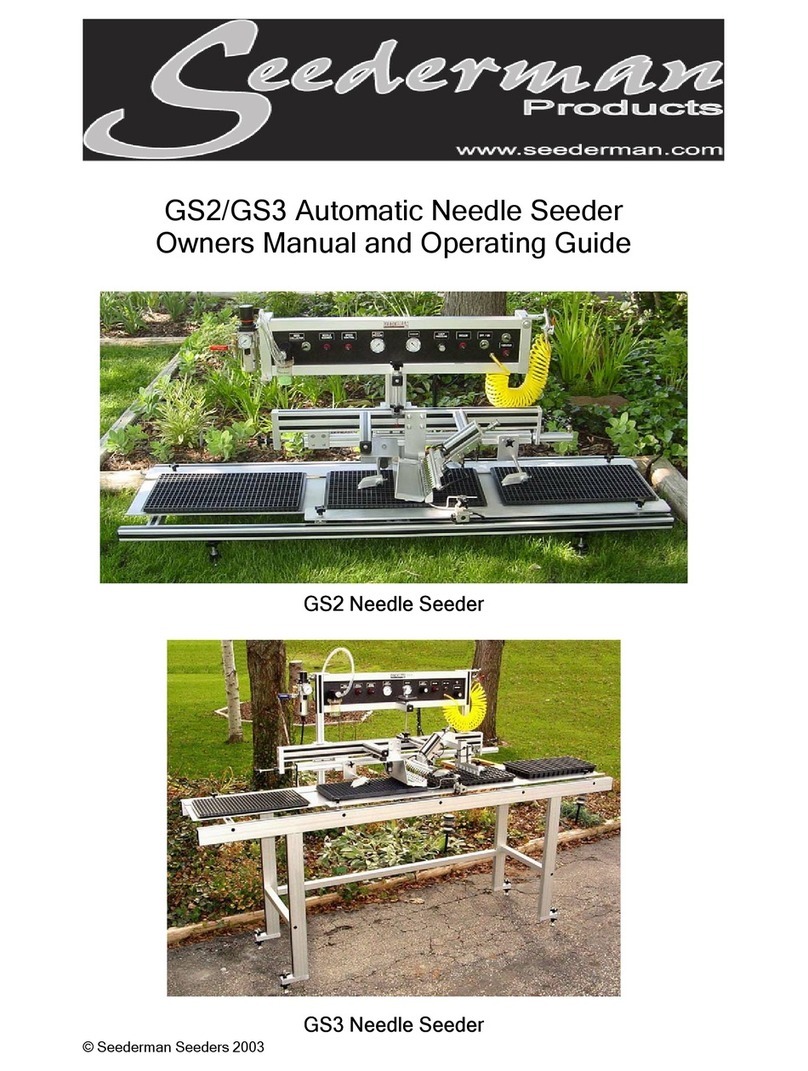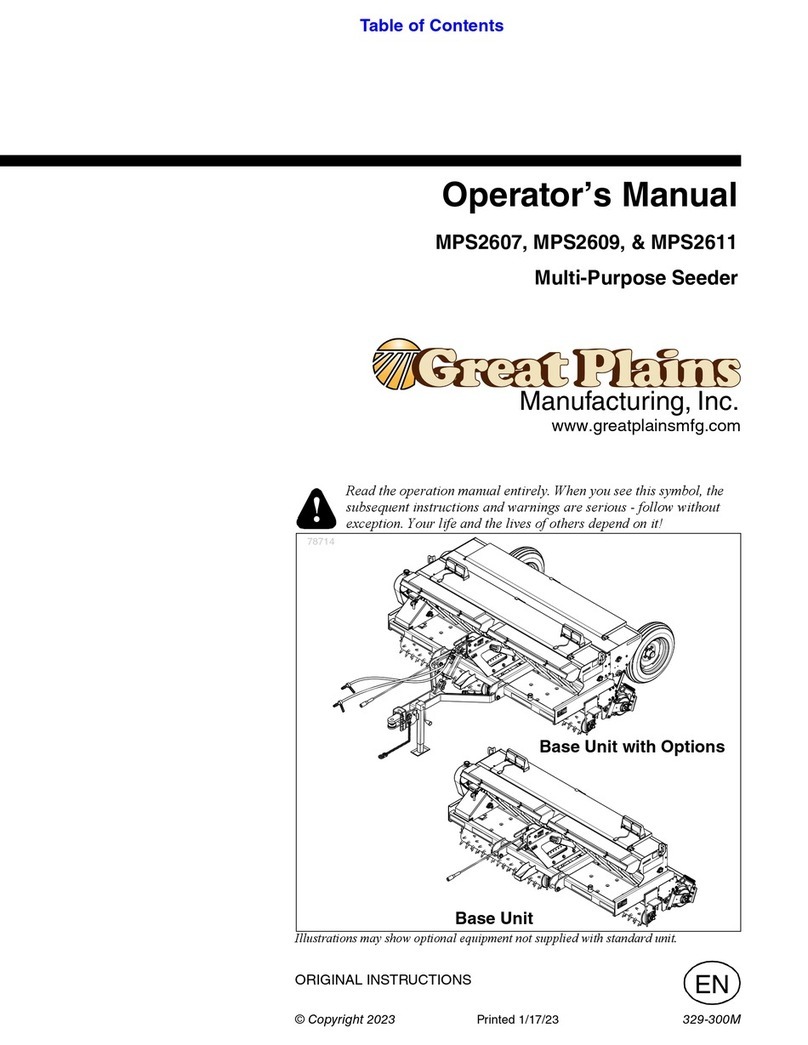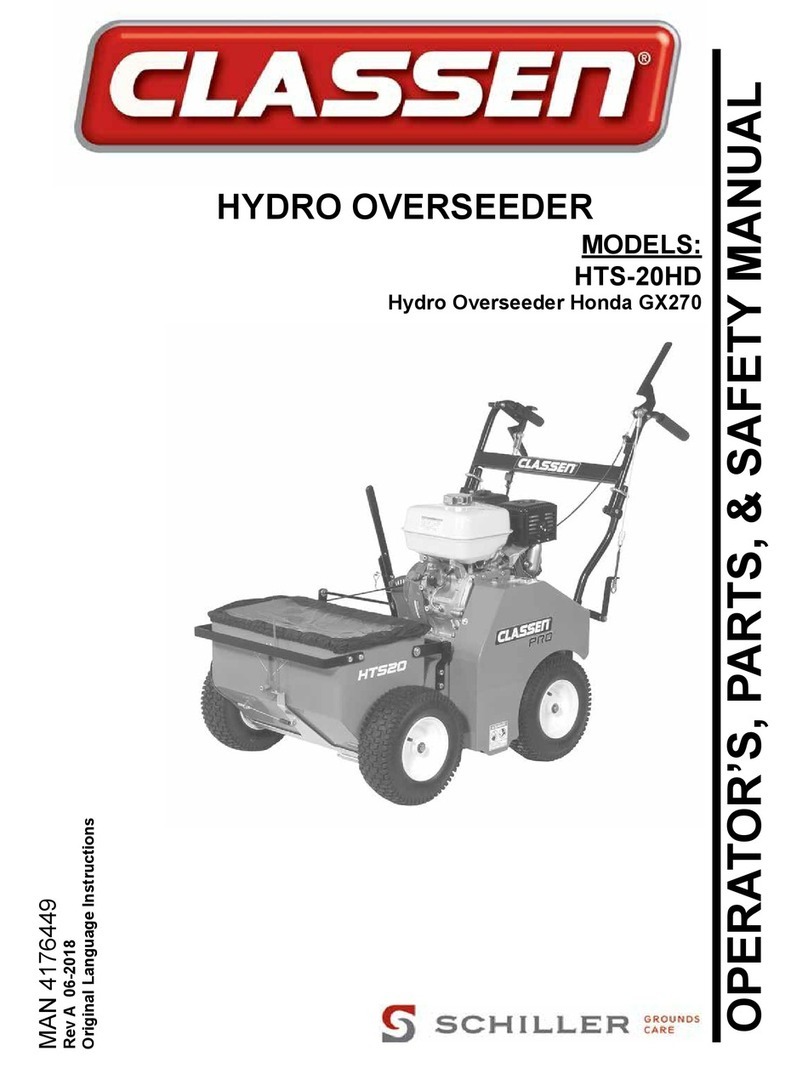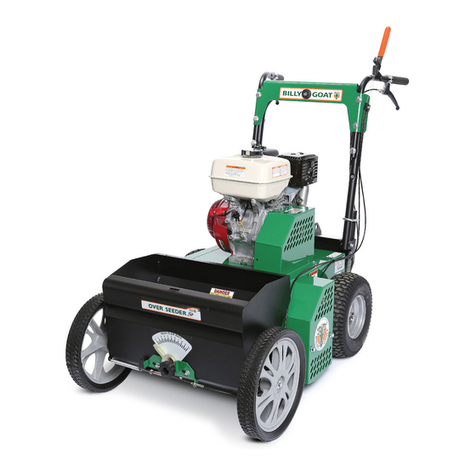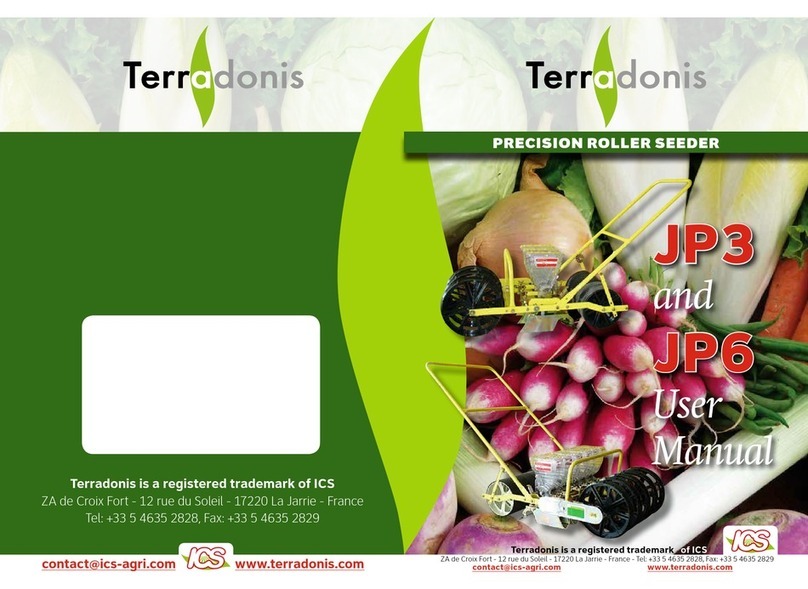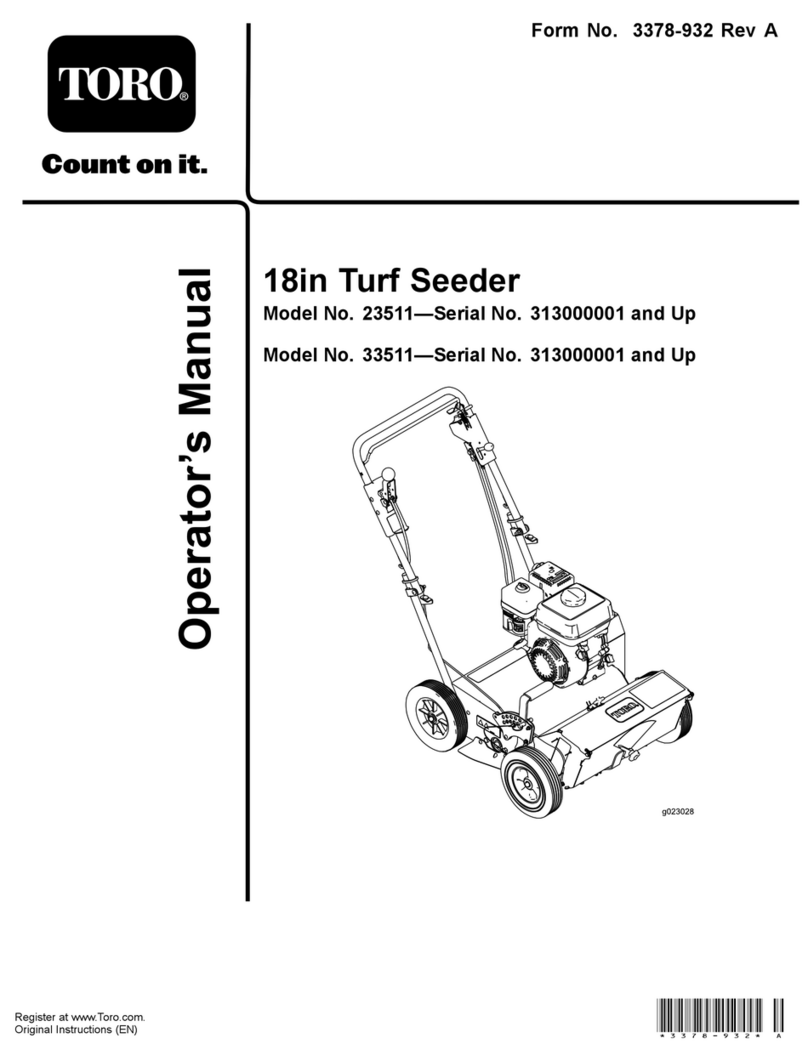
1009510 Rev A 2
TABLE OF CONTENTS
INTRODUCTION ......................................... 2
SAFETY PRECAUTIONS ............................ 2-3
SPECIFICATIONS ........................................ 3
SAFETY DECALS AND LABELS.................. 3-4
CONTROLS ............................................ 4-5
ASSEMBLY AND SET-UP .......................... 6-7
OPERATING INSTRUCTIONS.................... 7-10
MAINTENANCE AND STORAGE ............. 10-11
SERVICE AND ADJUSTMENTS .............. 11-20
WARRANTY....................................... 21-24
INTRODUCTION
UNDERSTANDING THE MACHINE SAFETY LABELS:
The machine safety labels shown in this section are placed in
important areas on your machine to draw attention to potential
safety hazards.
On your machine safety labels, the words DANGER, WARNING,
and CAUTION are used with this safety-alert symbol. DANGER
identifies the most serious hazards.
The operator's manual also explains any potential safety hazards
whenever necessary in special safety messages that are
identified with the word CAUTION and the safety-alert symbol.
Safety Alert Symbol
CAUTION: THE Spyker S120-4510
Power Seeder should only be operated
and maintained by thoroughly trained
individuals. The machines could cause
serious injury to anyone who misuses them
or does not understand their operation. All
operators and maintenance personnel are
urged to read this entire manual for their
personal safety.
NOTE: The engine manufacturer is responsible for all engine-
related issues with regards to performance, power-rating,
specifications, warranty and service. Please refer to the engine
manufacturer's owners/operator's manual, packed separately
with your unit, for more information.
SAFETY PRECAUTIONS
1.0 Training
1. Read the Operator’s Manual and other training
material. If the operator(s) or mechanic(s) cannot read
English, it is the owner’s responsibility to explain this
material to them.
2. Become familiar with the safe operation of the
equipment, operator controls, and safety signs.
3. All operators and mechanics should be trained. The
owner is responsible for training the users.
4. Never let children or untrained people operate or
service the equipment. Local regulations may restrict
the age of the operator.
5. The owner/user can prevent and is responsible for
accidents or injuries occurring to themselves, other
people or property.
2.0 Preparation
1. Evaluate the terrain to determine what accessories
and attachments are needed to properly and
safely perform the job. Only use accessories and
attachments approved by the manufacturer.
2. Wear appropriate clothing including safety glasses,
hearing protection, long pants, and safety shoes.
Long hair, loose clothing or jewelry may get tangled in
moving parts.
3. Inspect the area where the equipment is to be used
and remove all objects such as rocks, toys and wire
which can be thrown by the machine.
4. Use extra care when handling gasoline and other fuels.
They are flammable and vapors are explosive.
• Use only an approved container
• Never remove gas cap or add fuel when engine is
running. Do not smoke.
• Never refuel or drain the machine indoors.
• Always shut off the engine and permit it to cool
before removing the cap of the fuel tank.
• If the fuel container spout will not fit inside the fuel
tank opening, use a funnel.
• When filling the fuel tank, stop when the gasoline
reaches one inch from the top. This space must
be left for expansion. Do not overfill.
• Clean up oil or fuel spillage.
5. Check that safety switches and shields are attached
and functioning properly. Do not operate unless they
are functioning properly.
6. Do not remove any shield, guards, decals or safety
devices. If a shield, guard, decal or safety device is
damaged or does not function, repair or replace it
before operating the unit.
3.0 Operation
1. Never run an engine in an enclosed area.
2. Only operate in good light, keeping away from holes
and hidden hazards.
3. Be sure free wheel lever is in neutral, machine on level
surface, and parking brake is engaged before starting
engine. Always keep feet and hands clear of the engine
frame and slicer blades when starting engine.
4. Be sure of your footing while using pedestrian
controlled equipment, especially when backing up.
Walk, don’t run. Never operate on wet grass. Reduced
footing could cause slipping.
5. Slow down and use extra care on hillsides. Be sure
to travel in the recommended direction on hillsides.
Turf conditions can affect the machine’s stability. Use
caution while operating near drop-offs.
6. Slow down and use caution when making turns and
when changing directions on slopes.
7. Never raise or lower the slicer blade depth adjustment
with the slicer blades running.
8. Never operate with guards not securely in place. Be
sure all guards are attached, adjusted properly, and
functioning property.
9. Do not change the engine governor setting or over-
speed the engine.
10. Stop on level ground, disengage drive, shift free wheel
control to neutral, engage parking brake, shut off
